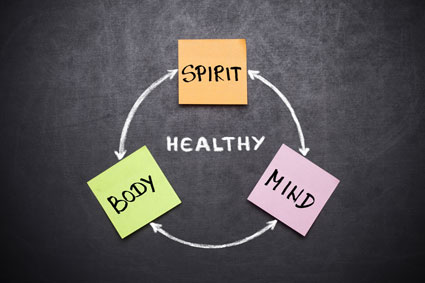Paper Filing Systems
While the electronic filing system format continues to grow in use and efficiency, this does not discount the need for paper filing systems.
Paper files allow for:
- Hard copies of important files. When someone needs a copy of a file, it will be readily accessible in a file cabinet on the property.
- An easy-to-access system. The paper filing system is easier to access because everyone in the company can get to it, even when you are not available to find the document.
- A supplemental system should electronic systems fail. In the event that one cannot access an electronic system or the electronic system of filing accidentally deletes a file, the backup will be the paper system.
Depending on the tasks of your position as a general secretary, you will file things in paper in a variety of ways:
- by subject or category;
- by date;
- by numbers, such as medical record numbers, account numbers, etc.;
- alphabetically.
In a paper filing system, it can be helpful to use the same system across the board, allowing for ease of training people in where to find certain files. At the same time, it may become necessary to have different filing systems for different kinds of documents, different departments, etc.
If you are moving into a role as a general secretary, the filing system may already be in place. When this is the case, because your role is to make things more efficient, it can help to note any problems you might have with the current system and suggest improvements.
When you are a part of a company that has employees in different settings outside of the office, or when you have employees that need to access files when they are on the road or in different time zones, electronic filing can be helpful.
Some simple systems for filing and storing documents include:
- Google Docs;
- Dropbox;
- Backup systems, such as MozyPro and Carbonite.
You can place electronic copies of your files into these systems and have them backed up so they are not lost accidentally. You can also provide access to files in order to edit them as needed.
The key to using electronic filing systems effectively includes:
- Having standardized file names. When everyone in the company names files in the same way, it becomes easier to find necessary files.
- Created folders and subfolders. It can also be helpful to have folders of certain types of files, as well as subfolders to further categorize the files. Additionally, different departments may want to have larger folders in which they can find specific files.
- Regularly increasing the storage space. Because electronic storage systems only have as much space as you order, you will need to check the storage limits of the system to ensure there is more room available.
The only trick with electronic filing systems is that it can be easy to put everything into the file system, even documents that are not necessary. When this seems to be the case, it can help to have documents that you need personally in your own computer's hard drive.
How to Create an Efficient File System
An efficient filing system is defined by a certain set of rules:
- Create clear file names, folders, and subfolders.
- Understand how people look for files.
- Prioritize files of greater importance.
- Protect the security of files.
As already stated, when the file names are consistent, it is clear what sorts of files are being filed and where they might be located.
It can also be a good practice to learn how people search for files when looking for them on their own. Ask different people and departments you support for suggestions on how to arrange their files in an effective manner.
Because there are certain files that need to be found quickly, such as customer-related files, make sure there is a way in which these files can be filed so they are easy to reach at any time of the day.
Finally, while security does not sound like a process of efficiency, if you are looking for a file and it suddenly is missing, that can slow down your work process. Find ways to back up the files in the system and ways to ensure that only people with the right title can access those files. Having password-protected files and folders can help in this respect.
This way, no one who is not permitted to see the files will gain access.
Summary
The creation of an effective filing system can help to streamline everyday processes, while also helping to support the needs of employees and customers. When a person needs a file, he or she knows where to go to find it.
Spreadsheets
Data Collection
Before you can begin most spreadsheets, you will need to have the data readily available for entry. This data can include:
- customer information;
- sales information;
- patient information;addresses, phone numbers, e-mail addresses, etc.;
- study data.
What you will be compiling is anything that you might need to review later that can be organized in a meaningful way. Think about the last set of invitations you had to send out to your friends. You had an address book in which you placed this information. That address book had clearly defined areas in which you would enter the information; a spreadsheet works in much the same way.
What you will want to do first is figure out what data you need and why you need it. This will help you learn more about the types of data you need to watch out for as you continue to work as a general secretary.
Talk with the management, as well as with other secretaries to find out what data points need to be a part of your everyday entry system and how you might be able to collect this data.
You might collect data by:
- having data sent to you;
- going to departments to collect data;
- using programs that assemble data;
- extracting data from certain programs;
- looking at paperwork;
- talking to customers, patients, or clients.
In each of these circumstances, you will want to focus on the most important pieces of data. At first, you may want to collect more data than you need, just to be certain you have all of the necessary details.
Over time, you will find what is most important and you will make this collection process more efficient.
Right now, what you can do is think about who you need to get data from, what data you need to get, and how you can store it in a way that will be helpful to you.
Often, you may get data from a variety of sources, so it is best to have a few different systems in place.
- Inbox: You may want to create an inbox on your desk or outside of your door where others can add information for you to include in a spreadsheet.
- E-mail: You can also request that information be sent to you over e-mail, where it can then be stored in discrete folders for later review.
- File folders on your desktop: If you have documents that you receive by e-mail, it can help to keep these documents in labeled file folders on your computer's desktop.
- Notes that you take in a special folder or notebook: When you collect data during phone calls, it may be wise to write these down in one particular place so they can be easily found and used.
Data Entry
Once you have the information that you need, it is time to assemble this information in a spreadsheet. What you will find in a spreadsheet are columns and rows into which you can put data.
You will be able to create the rows that make sense for the data you are collecting, and rows of that data.
For example, if you go back to the example of the invitation list, across the top of a spreadsheet program, you might include these columns:
- Name
- Address
- Phone number
- E-mail address
Then below, you can enter in the data so that it is easy to read and easy to find in the future. Save the spreadsheet document and you will have this readily available for use or for when you need to update incorrect or missing information.
It is not that data entry is difficult so much as it can be challenging when you have a lot of data to collect.
There are a few tricks you can use in order to make the data entry process smoother:
- Remove all distractions. When you are performing data entry as a general secretary, it is essential that you remove all distractions from your environment. Because it can be tricky to remember where you are in the chart, you need to be as focused as possible.
- Assemble and organize data. As you collect data, try to collect it in a way that will improve the data entry. For example, you might have a pile for different types of data. Or you might have all of the data on forms that are easy to read, as they have the same format.
- Work slowly at first. In the beginning, as you become accustomed to the way the spreadsheet is set up, take your time to enter in the information. Look at the work and ensure you are placing information in the proper columns and rows.
- Find repeating information. If there are certain pieces of information that are the same, use the cut and paste or copy and paste features in your spreadsheet program to speed up the process. In this way, you can add in the repeated information numerous times all at once.
- Check your work as you go. Every few minutes, check to make sure the data is ending up in the proper places.
- Save your work. Every time you check your work, save your work. You do not want to lose any of the work you have already put into the project.
With data entry, you will get into a rhythm of the work, even if you have a lot of entry to do. If you set up the system in its entirety, you will find that proper data entry will allow you to spend less time updating the entries as time goes on.
While there are several industry-specific spreadsheet programs you may need to use, there are a few programs that are most likely to be a part of your general secretary work:
- Excel;
- Google Spreadsheets;
- Open Office;
- Numbers;
- Lotus;
- Quattro.
All of these programs have their own systems of managing data when you enter it into the charts. Plus, with time and training, you can learn more about how you can manipulate the data to create presentations and other types of documents.
For example, with Excel, you can create charts and additional figures that visually show what the data is representing. This may not be an appropriate use of some data, such as contact information, but it can allow you to present sales figures, if that is a part of your role.
Something to also keep in mind about spreadsheet programs is that you want to allow for additional edits and changes. Keep a column open at the end of each row to allow for notes to yourself or to others who will review the document.
Summary
When creating spreadsheets, the main points are to determine what you need to organize, what data you need to collect, how it needs to be organized, and how you can ensure that data entry is as accurate as possible.































